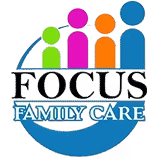Your speech therapy session length will vary based on your age, condition, and specific needs. For preschoolers, sessions typically last 30-45 minutes, while school-age children and adults often need 45-60 minutes. Some medical conditions may require longer 60-90 minute sessions. Your therapist will consider your attention span, progress rate, and therapy goals to determine the ideal duration. Understanding these factors can help you maximize your therapy’s effectiveness.
Factors That Determine Speech Therapy Session Length
Several key factors influence how long a speech therapy session should last, including the client’s age, attention span, and specific communication disorder.
When determining session length, you’ll need to take into account the severity of your client’s condition and their individual progress rate. Young children typically benefit from shorter, more frequent sessions to maintain engagement, while adults may handle longer durations.
The complexity of therapy goals also affects timing – some skills require extended practice periods, while others are better addressed in brief intervals.
Different speech therapy goals demand different time investments – from extensive drilling to quick, focused practice sessions.
Session frequency plays an essential role too. If your client attends therapy multiple times per week, shorter sessions might be more appropriate.
You must always prioritize client needs, adjusting session length based on their energy levels, motivation, and response to treatment. Regular assessment of these factors helps guarantee ideal therapeutic outcomes.
Medicare coverage for speech therapy sessions is available when prescribed by a physician and deemed medically necessary.
Standard Duration Guidelines by Age Group
While individual factors shape therapy plans, established age-based guidelines provide a helpful starting point for session scheduling.
For children under three, toddler sessions typically last 30 minutes to maintain focus and prevent fatigue.
Preschoolers ages 3-5 often benefit from 30-45 minute sessions, which allow time for structured activities and play-based therapy.
School-age children can usually manage 45-60 minute sessions effectively.
Adolescent sessions commonly run 45-60 minutes, accommodating more complex language tasks and social communication practice.
You’ll find that teens can maintain attention for longer periods and engage in higher-level therapeutic activities.
However, you should remain flexible with these timeframes, as some clients may need shorter, more frequent sessions to achieve ideal results.
Our skilled nursing care professionals can assist in coordinating therapy sessions with other medical treatments to ensure optimal outcomes.
Signs Your Session Length Needs Adjustment
Recognizing signs that your session length needs adjustment can help enhance therapy outcomes for each client. Watch for decreased client engagement during sessions, including fidgeting, loss of focus, or increased frustration.
If your client consistently can’t complete planned activities within the allotted time, you may need longer sessions. Conversely, if they’re regularly finishing early or losing steam before the session ends, consider shorter durations.
Monitor session effectiveness by tracking progress toward goals. If advancement seems slower than expected, the current duration mightn’t provide enough practice time.
Pay attention to client fatigue levels, especially in younger children or those with multiple therapy needs. Some clients might benefit from splitting longer sessions into shorter, more frequent meetings to maintain ideal attention and learning capacity.
Working with a licensed therapist ensures your session length is optimally tailored to your individual recovery needs and goals.
Research on Optimal Treatment Times
Research on ideal speech therapy session duration has yielded varying results across different age groups and conditions. Studies focusing on treatment efficacy suggest that preschool children often benefit most from 30-45 minute sessions, while school-age children may require 45-60 minutes to achieve optimal outcomes.
Studies show that speech therapy duration needs vary: younger children thrive with shorter sessions, while older students need more time.
Evidence-based practices indicate that adults recovering from stroke or traumatic brain injury might need longer sessions of 60-90 minutes to make meaningful progress.
You’ll find that intensive programs sometimes utilize multiple shorter sessions throughout the day rather than one extended period.
Research also shows that factors like attention span, fatigue levels, and specific communication goals play essential roles in determining the most effective session length for your clients.
The key is to maintain flexibility and adjust duration based on individual patient responses and progress monitoring data.
Similar to post-surgical rehabilitation, therapy sessions may need to be adjusted in frequency and duration as the patient’s condition improves.
Impact of Attention Span and Fatigue
Because attention span and fatigue directly influence therapy outcomes, you’ll need to carefully monitor these factors during sessions.
Watch for signs of mental exhaustion, such as decreased engagement, increased errors, or restlessness. These indicators signal it’s time to adjust your approach.
Implement attention management techniques by breaking activities into shorter segments and incorporating brief movement breaks. You’ll find your clients respond better when you alternate between challenging and lighter tasks.
For younger clients or those with attention difficulties, consider shorter, more frequent sessions.
To combat fatigue strategies, schedule demanding exercises early in the session when energy levels are highest. You can maintain engagement by varying activities, using interactive materials, and ensuring your client’s positioning is comfortable.
Remember that ideal session length often depends on individual stamina levels.
Similar to how private duty nursing services adapt to each patient’s needs, session lengths should be customized based on the client’s unique circumstances and capabilities.
Cost vs. Duration Considerations
The price tag for speech therapy sessions often drives decisions about their duration, with longer sessions requiring higher out-of-pocket costs.
When you’re planning therapy duration, you’ll need to balance financial constraints with therapeutic needs to maximize session value.
Consider that while shorter sessions may seem more budget-friendly, they might require more frequent visits to achieve the same progress.
Sometimes, longer sessions can offer better cost effectiveness by allowing for more thorough practice and skill development.
You’ll want to discuss with your speech therapist whether condensing exercises into shorter, frequent sessions or spacing them out in longer, less frequent visits will better serve your specific needs.
If you’re working with insurance, check their coverage policies, as some plans limit session duration or frequency, which may influence your choices.
Measuring Progress Based on Session Length
While measuring progress in speech therapy depends on multiple factors, session length plays a crucial role in tracking improvement. You’ll find that longer sessions often allow for more thorough progress tracking, giving you better insights into your client’s development.
However, shorter, more frequent sessions might show steadier advancement for some individuals, especially children.
Regular, brief therapy sessions can lead to more consistent progress, particularly when working with younger patients.
To effectively measure progress based on session duration, you should document improvements across different time formats. Compare your client’s performance in 30-minute sessions versus hour-long appointments, noting engagement levels and skill retention.
Session frequency also impacts progress measurement – clients attending twice-weekly shorter sessions might show different patterns than those in weekly longer sessions.
Consider using standardized assessments at regular intervals to quantify improvements regardless of session length.
Creating an Effective Session Schedule
Creating an effective session schedule starts with understanding your client’s unique needs and lifestyle constraints. Consider their age, attention span, medical conditions, and therapy goals when determining session frequency.
You’ll want to balance ideal treatment intervals with practical factors like work, school, or family commitments. Develop a schedule that accommodates both client preferences and clinical requirements.
Some clients may benefit from shorter, more frequent sessions, while others might achieve better results with longer, less frequent visits. Be prepared to adjust the schedule based on progress and feedback.
Factor in travel time, preparation needs, and potential make-up sessions when planning. Remember to build in flexibility for unexpected changes while maintaining consistency in treatment delivery.
Document your scheduling decisions and rationale to support insurance requirements and clinical best practices.
Conclusion
Speech therapy works best when you pick session times that feel right for you. Just like every person is unique, the time you need in therapy can be different from someone else’s. Think of it like building a house – some parts need more time and care than others. Your speech therapist will work with you to find the perfect schedule that helps you meet your goals and keeps you comfortable.
Remember, you’re not walking this path alone. Our caring team at Focus Family Care understands that everyone moves at their own pace, and we’re here to support you every step of the way.
If you or a loved one need help, don’t wait. Reach out to Focus Family Care today at (561) 693-1311 or email us at info@focusfamilycare.com.





